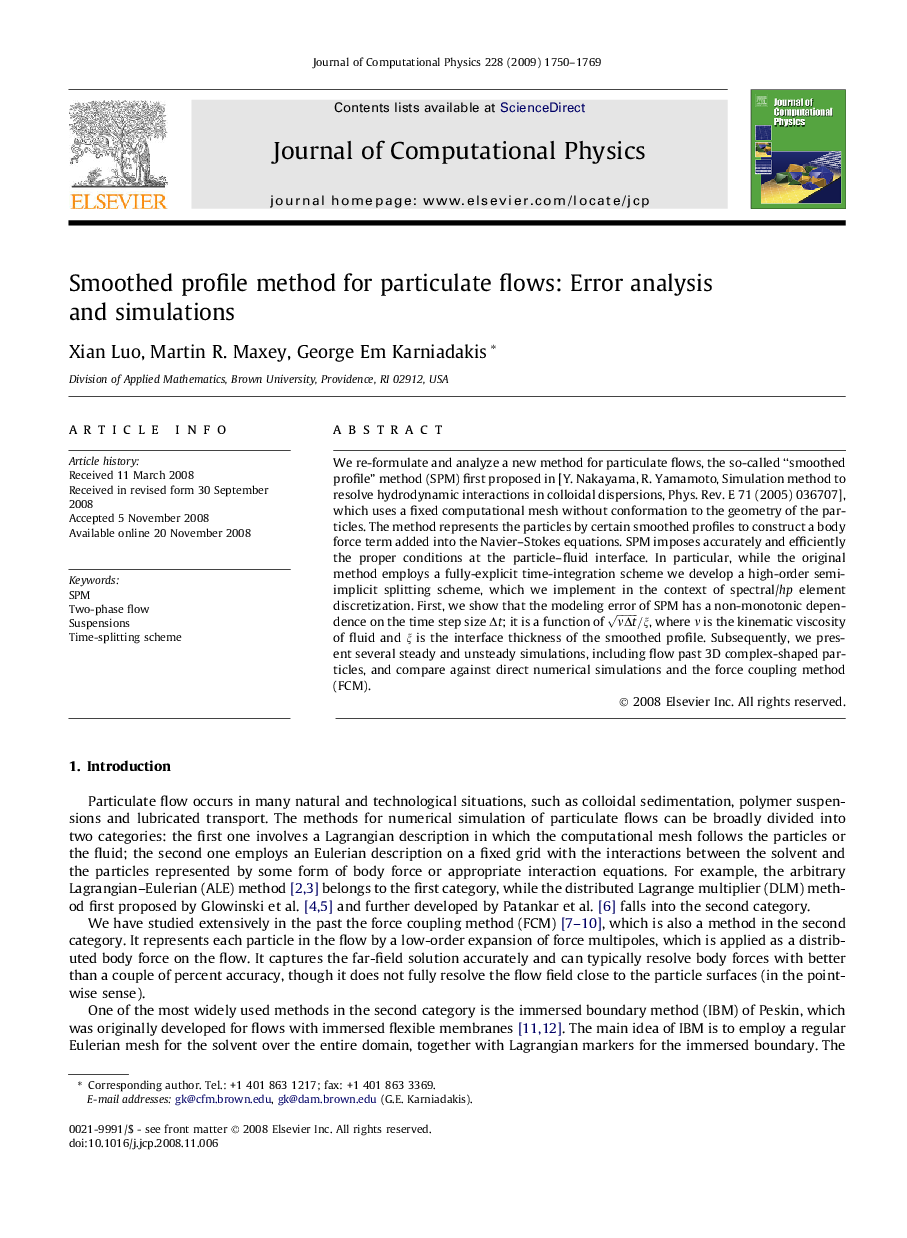| Article ID | Journal | Published Year | Pages | File Type |
|---|---|---|---|---|
| 520191 | Journal of Computational Physics | 2009 | 20 Pages |
We re-formulate and analyze a new method for particulate flows, the so-called “smoothed profile” method (SPM) first proposed in [Y. Nakayama, R. Yamamoto, Simulation method to resolve hydrodynamic interactions in colloidal dispersions, Phys. Rev. E 71 (2005) 036707], which uses a fixed computational mesh without conformation to the geometry of the particles. The method represents the particles by certain smoothed profiles to construct a body force term added into the Navier–Stokes equations. SPM imposes accurately and efficiently the proper conditions at the particle–fluid interface. In particular, while the original method employs a fully-explicit time-integration scheme we develop a high-order semi-implicit splitting scheme, which we implement in the context of spectral/hp element discretization. First, we show that the modeling error of SPM has a non-monotonic dependence on the time step size ΔtΔt; it is a function of νΔt/ξ, where νν is the kinematic viscosity of fluid and ξξ is the interface thickness of the smoothed profile. Subsequently, we present several steady and unsteady simulations, including flow past 3D complex-shaped particles, and compare against direct numerical simulations and the force coupling method (FCM).
